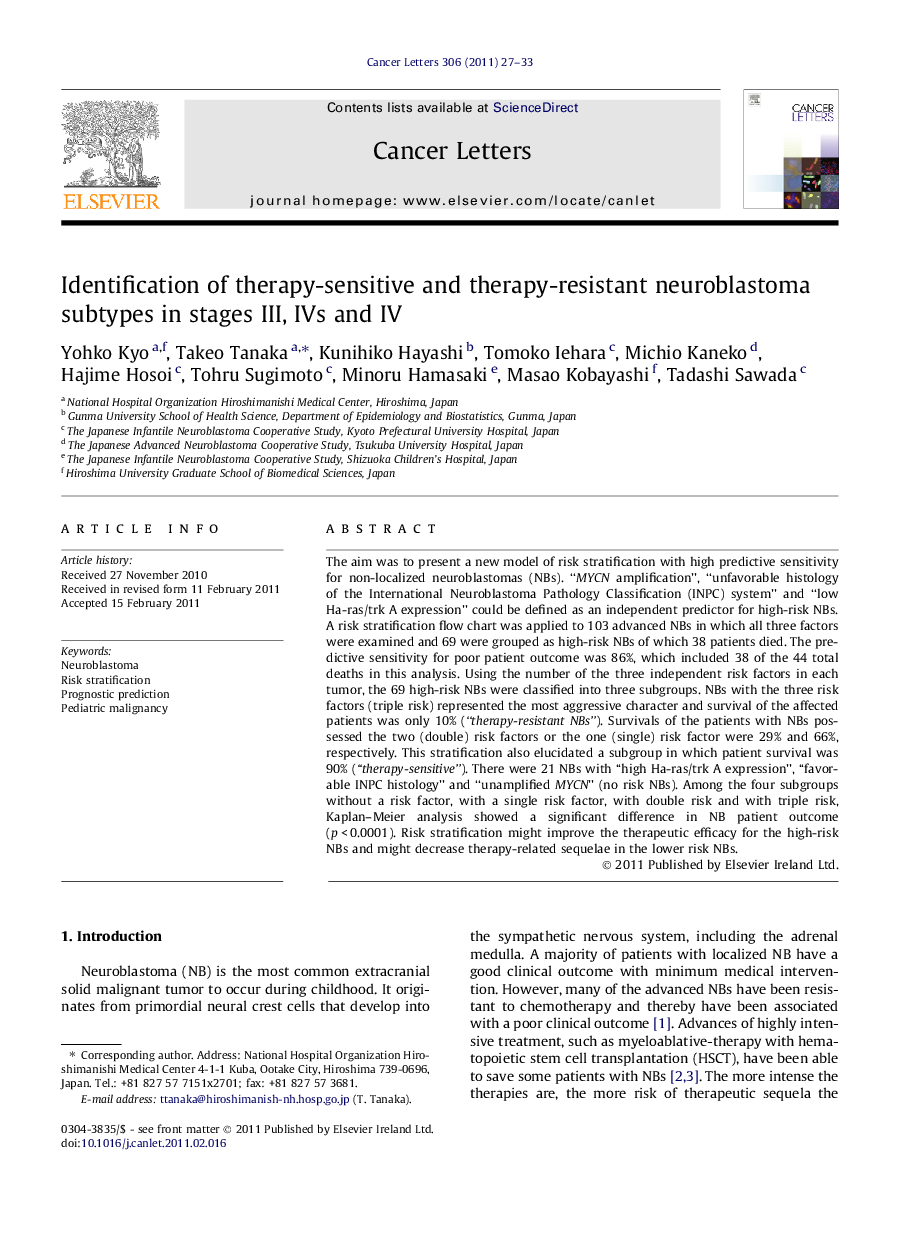| Article ID | Journal | Published Year | Pages | File Type |
|---|---|---|---|---|
| 2113754 | Cancer Letters | 2011 | 7 Pages |
The aim was to present a new model of risk stratification with high predictive sensitivity for non-localized neuroblastomas (NBs). “MYCN amplification”, “unfavorable histology of the International Neuroblastoma Pathology Classification (INPC) system” and “low Ha-ras/trk A expression” could be defined as an independent predictor for high-risk NBs. A risk stratification flow chart was applied to 103 advanced NBs in which all three factors were examined and 69 were grouped as high-risk NBs of which 38 patients died. The predictive sensitivity for poor patient outcome was 86%, which included 38 of the 44 total deaths in this analysis. Using the number of the three independent risk factors in each tumor, the 69 high-risk NBs were classified into three subgroups. NBs with the three risk factors (triple risk) represented the most aggressive character and survival of the affected patients was only 10% (“therapy-resistant NBs”). Survivals of the patients with NBs possessed the two (double) risk factors or the one (single) risk factor were 29% and 66%, respectively. This stratification also elucidated a subgroup in which patient survival was 90% (“therapy-sensitive”). There were 21 NBs with “high Ha-ras/trk A expression”, “favorable INPC histology” and “unamplified MYCN” (no risk NBs). Among the four subgroups without a risk factor, with a single risk factor, with double risk and with triple risk, Kaplan–Meier analysis showed a significant difference in NB patient outcome (p < 0.0001). Risk stratification might improve the therapeutic efficacy for the high-risk NBs and might decrease therapy-related sequelae in the lower risk NBs.
